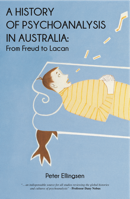While it is theorised within an inch of its life, psychoanalysis is a practical business. It abounds in ideas, but can only be known the way Milton knew “every alley” of his “wilde wood”; that is, by walking through it.
As Freud insisted, you need to do it. But do what exactly? Talk, of course, is the idiom, but Freud’s talk, “Free Association”, is odd; as he says, a “strange state of mind in which one knows and does not know a thing at the same time”. (Freud, 1893). Such speech is a surprise, especially for the speaker. It can’t be planned and it speaks us, rather than the other way round. Nor is it cheap. It exacts a price, but is it one that equates to the cost of a book or lecture?
Freud thought about this as he continually reworked his ideas on the page. It was his way to discover how words were in fact deeds. But it was not an intellectual exercise. As he explained in 1924 when recommending his new structural model of the mind, the one featuring the ego, id and superego, what matters is “a profitable return from grey theory to the perpetual green of experience”. The reference is from Faust. “My worthy friend, gray is all theory, and green alone Life’s golden tree” (Freud, 1924). What is this experience, so fecund that it makes theory a dreary polarity to gilded life?
As with much in Freud, the question is, like Alice’s looking glass, a device that goes on asking. Is Freud, the great theorizer, warning against theory? In a way, yes. If you go back 10 years from the 1924 paper you’ll find him wary of “unfruitful” theoretical controversy wherein one can become “intoxicated with one’s own assertions”(Freud, 1914). This is not to discount the possibility that theorizing may be fruitful. In one of the last papers he wrote, he advised analysts to encourage beginning patients to collaborate in the “intellectual work” ahead (Freud, 1938). He also believed the “relative power of (a patient’s) intellectual functions” was one determinant of success. (Freud, 1938).
This is not, however, to say that psychoanalysis works by, and is grasped through, cleverness. You don’t lie on the couch to trade talent. You lie on the couch so that something may change. It is a jolt when it does, and Freud, who “always expected to find something new” (Freud, 1912), did not back away from this revelation. He seems to have lived the way Kafka thought we should read; that is, with books that wound and stab. As Freud suggested in 1919: “To do its profound and searing work on the soul, analysis must be an ordeal”. (Freud, 1919).
This is because the deep kernel of analytic treatment is not intellect but transference neurosis. Freud thought of it as an artificial illness the analyst brings into being, and it comes not from theorizing, but something much closer to the enigma of our existence, the analysand’s obsessive interest in the person of the analyst. The result is that being on the couch is an unsettling rather than a speculative practice. What has to be learnt is something which, as Freud says “never comes easy to anyone.” It is the shocking truth that we are being lived by the forces within us. “Endowed”, as Alexander Pope says, “with a little, crazy carcass,” we live through that long disease, life”. Freud found a way out, or perhaps it is a way in, and the map he left is not Cartesian. As he observed in 1912, “mental activities such as thinking something over or concentrating the attention solve none of the riddles of a neurosis”.
What worked, he believed, was not pondering in the manner Rodin suggests with his sculpture, but speaking in a particular way. It is, as he told Thomas Mann, akin to an act. It requires the sort of looking, or refusal to look away, that made Primo Levi the best chronicler of the Holocaust. Freud kept looking. He may not, as he told his friend Stefan Zweig, have enjoyed looking at himself, at least in a portrait, but when pressed about his output, he admitted another sort of looking. “In so much as achievement is concerned, it was less the result of intellect than of character”, he said (Freud, 1978).
References
Freud, E. F., L and Grubrich-Simitis, I. (1978). Sigmund Freud: His Life in Pictures and Words. New York: Norton.
Freud, S. (1893). Studies on Hysteria (J. Strachey, Trans. Vantage, 2001 ed. Vol. 2). London: Hogarth.
Freud, S. (1912). Recommends to Physicians Practising Psychoanalysis (2001 ed. Vol. 12). London: Vintage.
Freud, S. (1914). From the History of an Infantile Neurosis: Case Histories 11 (A. Richards, Trans. 1979 ed. Vol. 9). London: Penguin.
Freud, S. (1919). Lines of Advance in Psychoanalytic Therapy (Vol. 12). London: Vintage.
Freud, S. (1924). Neurosis and Psychosis (Vol. 19). London: Vintage.
Freud, S. (1938). An Outline of Psychoanalysis (J. Strachey, Trans. 2001 ed. Vol. 23). London: Vintage.

